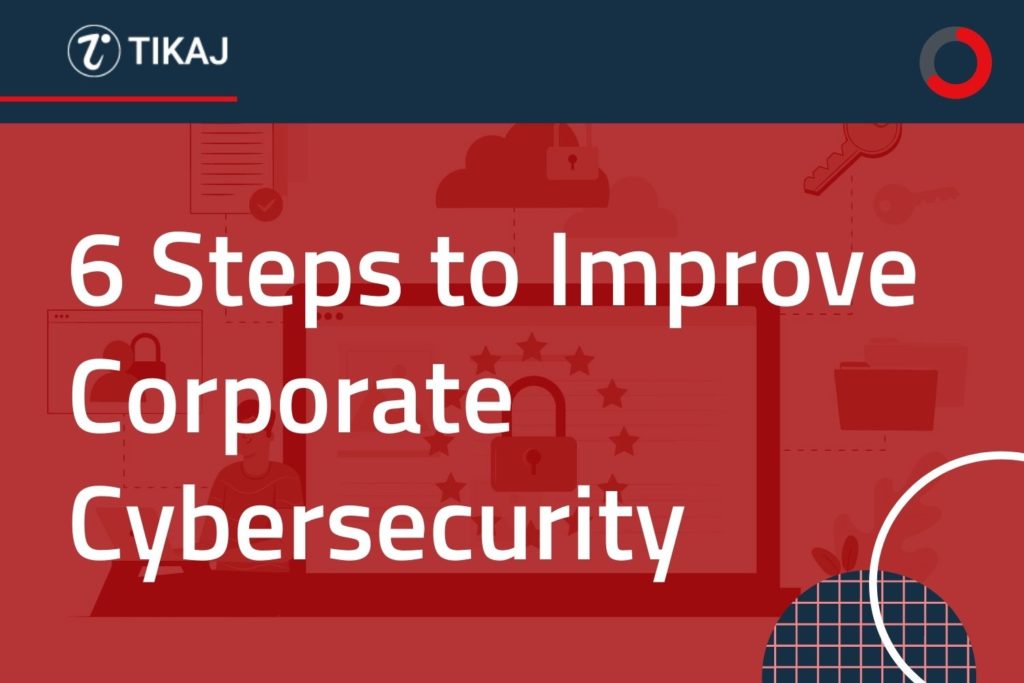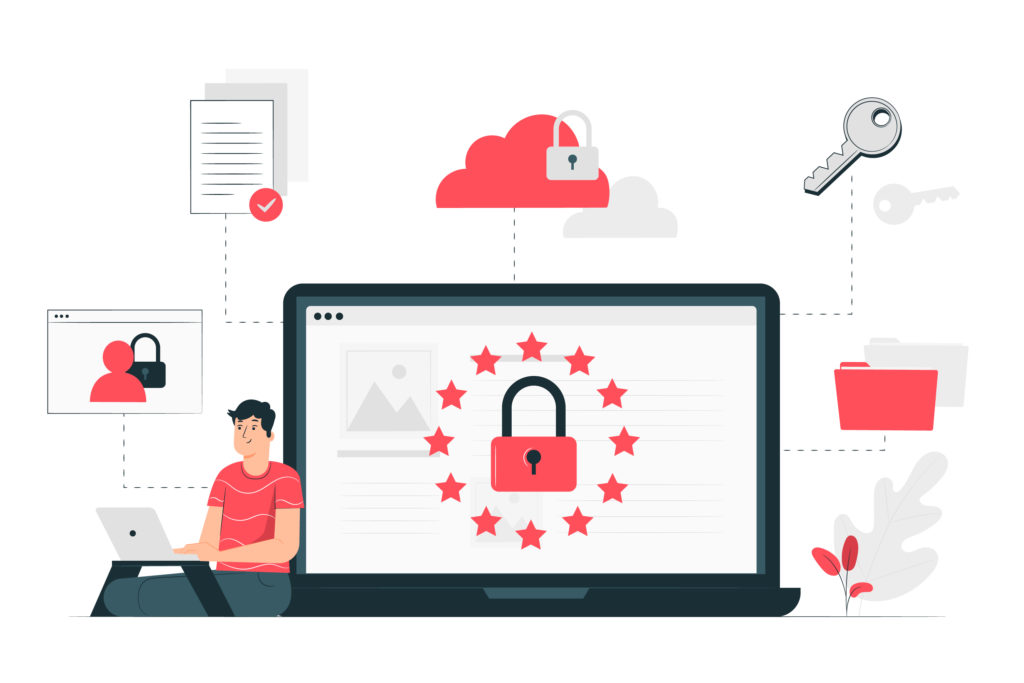6 Steps to Improve Corporate Cybersecurity Now

What is corporate cybersecurity?
Corporate cybersecurity refers to the techniques that ensure that the data, program, computer, and network are secured from unauthorized access and exploitation.
On the other hand, Cybersecurity refers to the body of technologies, processes, and practices designed to protect networks, devices, programs, and data from attack, damage, or/and unauthorized access. Of late Cybersecurity is also be referred to as information technology security by many people in the domain.
Tap to read in detail- https://www.tikaj.com/blog/managing-cyber-threats-through-effective-governance/
For corporate cybersecurity professionals, preventing cybersecurity threats in email has always been the topmost priority. Especially during the pandemic has been a seismic event for corporate security and risk intelligence.
It’s changing how one works, and it’s opening up new opportunities for security teams to take a bigger stake in their companies. As threats become more sophisticated, corporate cybersecurity aimed to keep pace by implementing equally sophisticated cybersecurity products.

Steps to improve Corporate CyberSecurity:
1.Consider any physical threats
While the most common corporate cybersecurity form of compromised computer security tends to be through online hacking, physical threats are still common.
It’s also possible that the physical files that, once discarded, can be used to gather information. Documents can also be stolen or destroyed, if there are any actual break-ins.
Your aim should be to avoid these scenarios in all possible ways, there are some simple yet effective solutions. One is keeping an eye on and regulating who all have the access to your company’s parameters. Make sure to limit keys or passes to areas that you don’t want frequently visited or that may contain information you don’t want to be shared. This will help you in mitigating the chances of inappropriate use of your clients’ information.
It’s always reiterated that upgrading your security hardware on a regular basis should never be an option rather a necessity. This can include:
- Installing new cameras
- Hiring more security staff
- Equipping your building with new locks
- Upgrading windows and doors
2. Embedment of security into businesses
Keeping track and managing security alerts is not a one-person or one team’s duty. Embedment of security techniques in each institution on different levels and across units is a must-have necessity. Prioritize developing a security council that has agents from several business units in your corporation and using a weekly work schedule template that would help the company maximize efficiency.
Keeping numerous opinions open can help bring creative ideas to the table and can also enable organizational alignment on the prioritization of threat protection.
3. Special security projects
In each organization, there must be a crowd with a dominant interest in keeping security in higher esteem than others. Having such people handy would be a good idea in order to identify these resources so that the company can utilize their expertise and interest in this particular field.
Chances of these advocates being eager and open to provide technical direction and suggest new ideas and approaches when it comes to solving problems are high chances. One must take into consideration having these individuals run special security projects for the corporation or, perhaps, ask that they represent security for their respective function or business group.
4. Formulating adept policies and procedures
Corporations must make sure to create policies around remote access, data management, password creation, and rules on the acceptable use of company information. As policies and procedures are the base documents that define an organization’s rules for dealing with data.
Policies aim to deliver an intricate outline of the organization’s standards, and procedures guide you on how and when things should be done.
Security is no more just the IT department’s battlefield, security is now a collaborative approach so companies should design well-defined strategies and procedures, or even show them visually using an online video maker, so that employees know their security responsibilities.
5. Granting access carefully
Organizations need to make sure that they have secure access to corporate systems and data – they also need to be able to identify and control which machines and servers have access. Implementing machine, server, and device authentication mean only machines with the appropriate credentials can access, communicate, and operate on corporate networks.
Letting the right people in is just as important as keeping the wrong people out as Client authentication is the process by which users within an organization can access servers remotely.
A “digital ID” can be used to map user accounts that should be given access control to network resources, web services, and websites.
6. Educate your entire staff
Every employee of each organization must have a clear understanding of what can and cannot be shared with customers and amongst each other. Encouraging cybersecurity is not something that can be done overnight, responsibility for cybersecurity can go a long way toward making employees more aware of data that can be shared and that can’t/should not be shared.
Help them and tell them the purpose of being extra vigilant about what they send and to whom, so that they are encouraged by their own to protect. Cybersecurity responsibility is no more just a business owner’s concern rather it should be everyone’s responsibility.
Click to continue your flow on similar blogs – https://www.govtech.com/blogs/lohrmann-on-cybersecurity/most-popular-cybersecurity-blog-posts-from-2020.html






